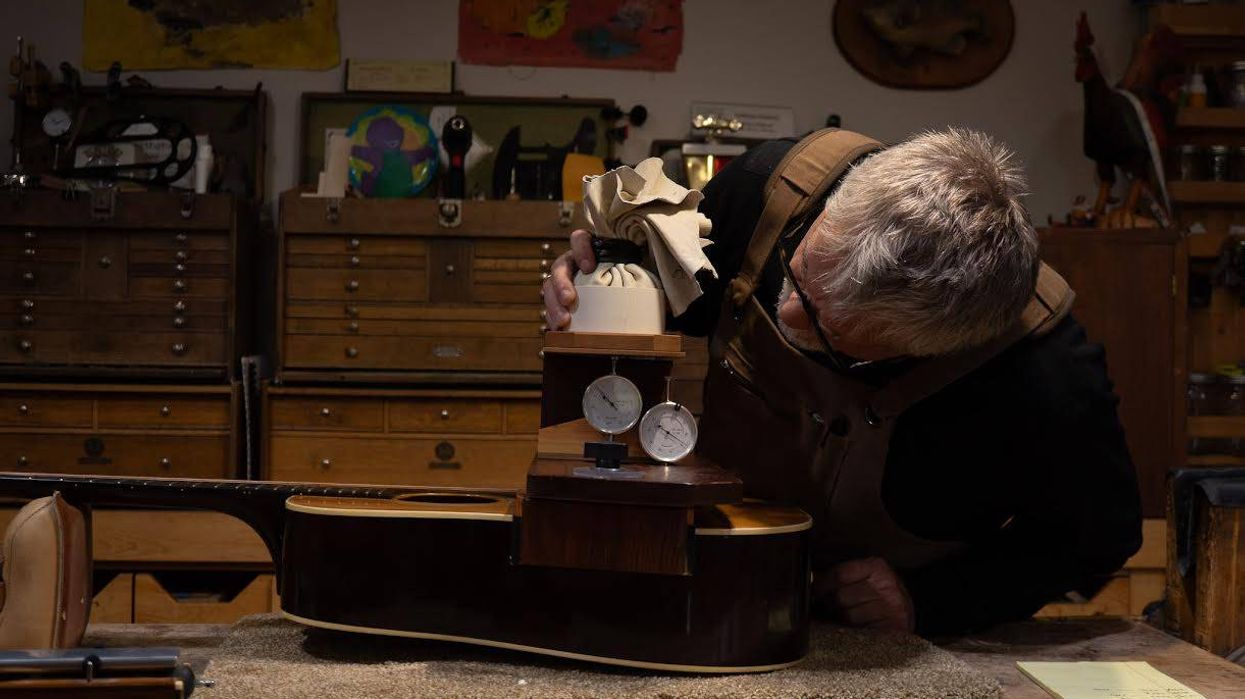While it might be easy for players to see, feel, and hear their guitar strings wearing out, it’s less obvious to see worn frets, despite their sharing equal responsibility for each note. Fret and string interaction is fundamental to the function of a guitar, but many players give little thought to the influence frets have on the way our guitars work, and how we play them.
Though the earliest frets were little more than pieces of string tied around a neck and slid into position by the player, guitar frets have been made from metal for centuries. For much of this time, a fret was a simple, straight-sided length of metal hammered into a groove sawn into the fretboard. This method worked well—particularly with relatively large-diameter gut strings—because the player’s fingertip was largely on top of the string and didn’t contact the abrupt, straight-sided fret much.
As smaller-diameter steel strings became increasingly common, the player’s fingertips contacted the sides of the fret more than before, creating a distinctly bumpy, ridged feeling on the neck. In response, wire makers created what we think of as a modern T-style fret, characterized by its larger semi-circular top section held in place by a slender straight portion, and, often, small teeth embossed in the sides to bite into the wood fretboard. This style of fret makes for a smoother playing feel and is easier to install at a uniform height. That’s thanks to the built-in stop that bumps into the fretboard’s surface when fully seated.
Regardless of the fret’s exact cross-section, the most critical aspect is that the top of each fret is exactly the same level as those in front and behind it. If not, the vibrating string is likely to contact the unwanted high spot and create a buzz or incorrect note. The frets don’t necessarily require identical height between the fretboard surface and the top of each fret—only that the tops of all frets fall in an even plane with each other. In fact, this is a typical scenario for a guitar.
The issue is that when two metal things rub together, they wear. Mostly, the harder metal will wear away the softer metal. Guitar strings and their differing alloys and construction styles have a wide variety of hardness, as do fret wires. Frets are bound to wear unevenly as we play, progressing to the point where an often-played note is measurably lower in elevation than a less-worn fret, preventing the string from playing accurately. The remedy is to grind the tops of all the frets into a uniform lower plane with respect to the intended radius of the fretboard, and then reshape the sides of each fret to a semicircular cross section to restore accurate pitch and consistent playability to every note. Since frets in the lower and middle portions of the fretboard are typically subjected to more wear than the highest notes, each successive fret-leveling operation tends to result in slightly shorter frets near the nut, and slightly taller ones at the dusty end of the fretboard.
After establishing a uniform plane across the tops of the frets, a second consideration is the overall height of the fret. The distance between the depressed string and the fretboard surface significantly changes the feel and playing style of a guitar neck. Put simply, smaller frets will tend to offer more accurate pitch for each note, while larger, taller frets can offer more expressive notes.
When a string is pressed to the fret, our fingertips subtly bend the string sharp as we push toward the fretboard surface. And as our fingertips contact the wood fretboard, the extra finger pressure is distributed, preventing the player from raising the pitch any further. This bending effect is minimized with small frets since they somewhat limit the player from pressing too much and raising notes higher than the intended pitch. In contrast, tall frets can exaggerate a deviation from the intended pitch, but they also allow for a myriad of expressive effects. This is because the player’s fingertips have a high degree of control to bend down toward the fretboard or sideways to alter the nuance of each note.
Regardless of the style or metal alloy, frets will wear over time. They can be leveled a number of times, but once they’re too low to play comfortably, it’s time to replace them to restore playability and expression to your guitar.



















